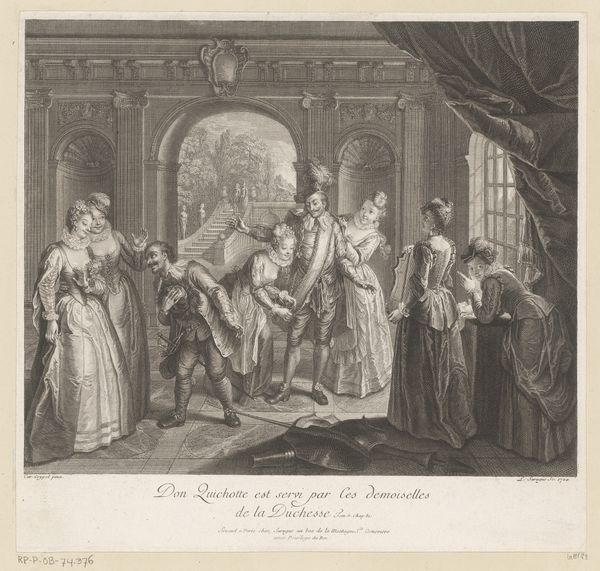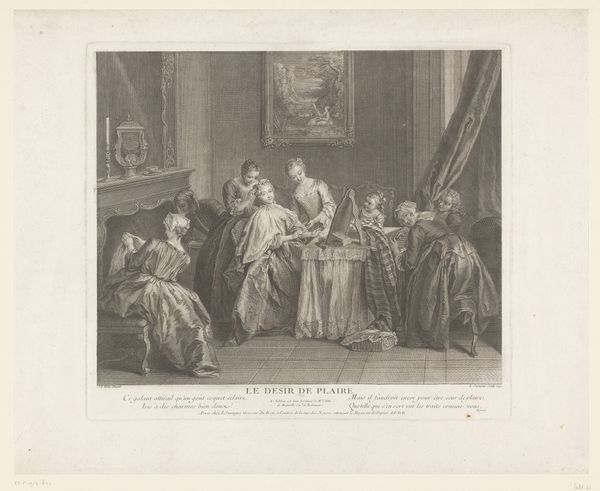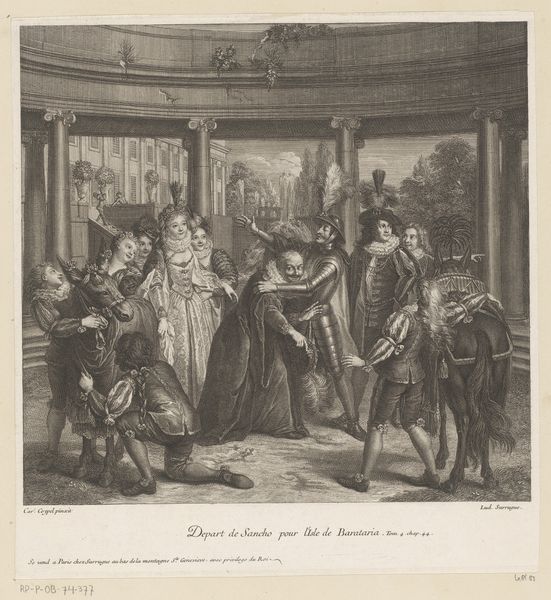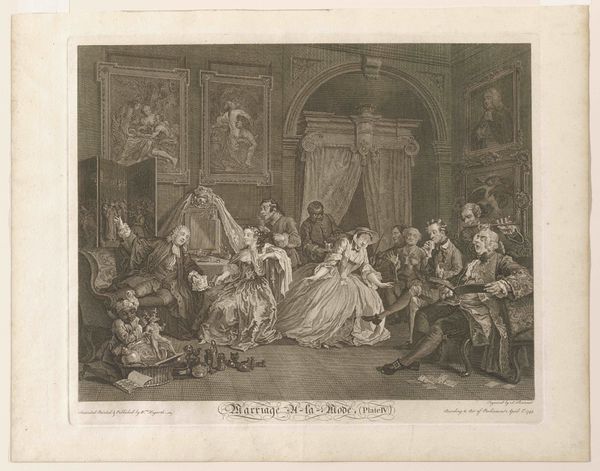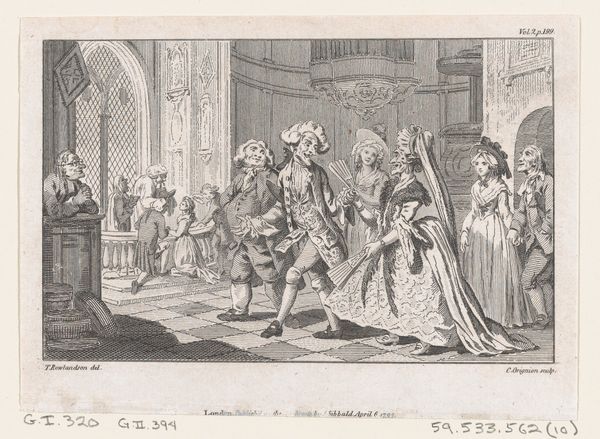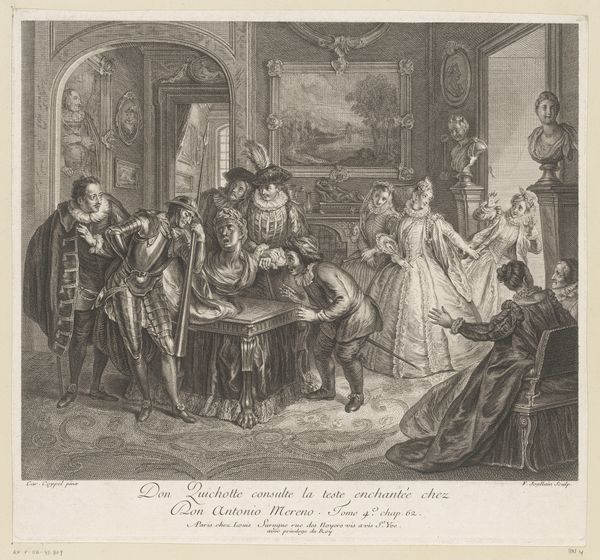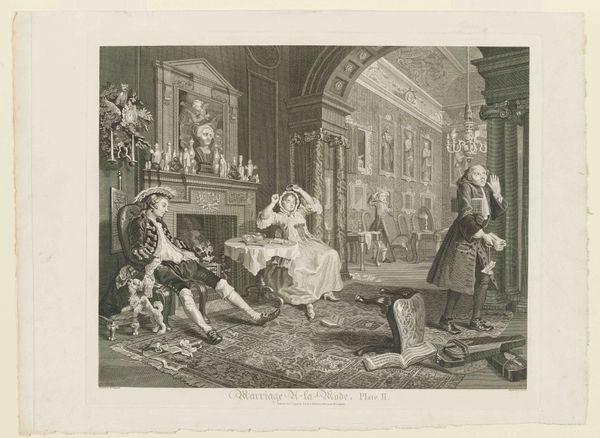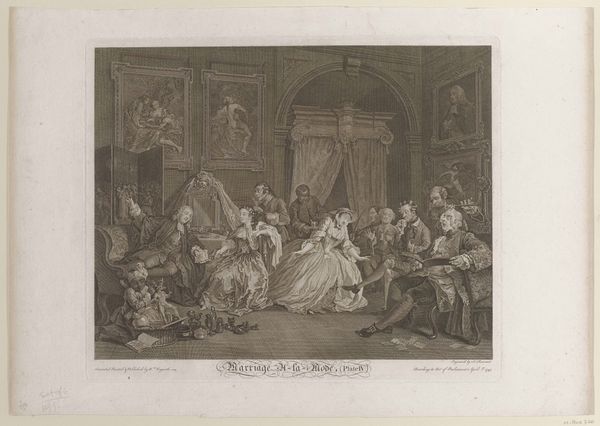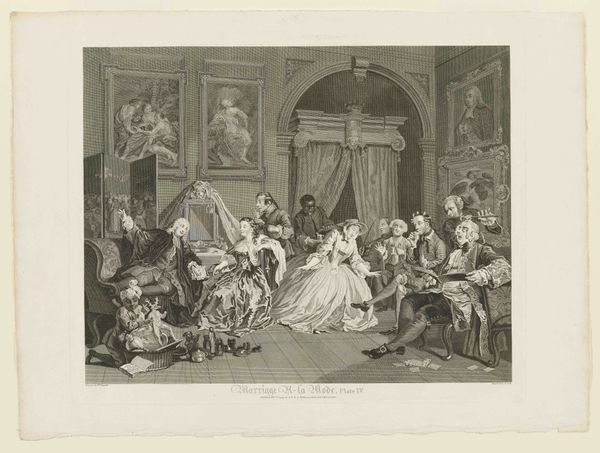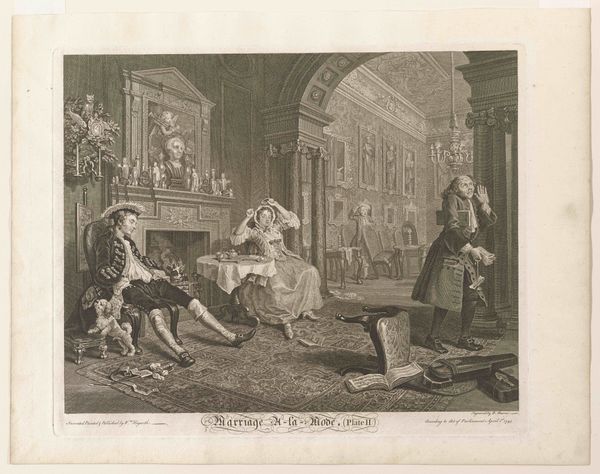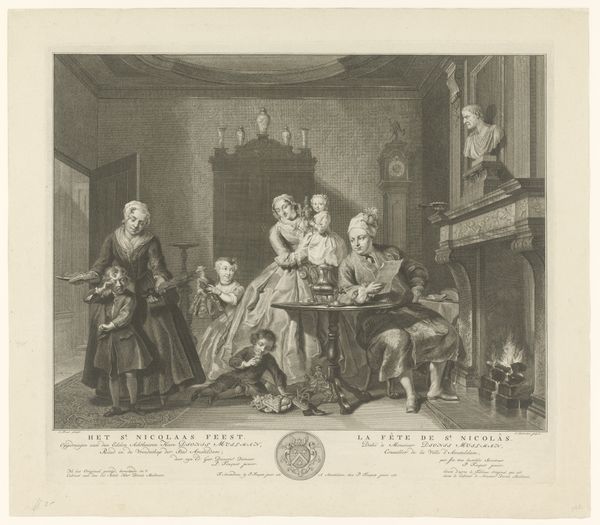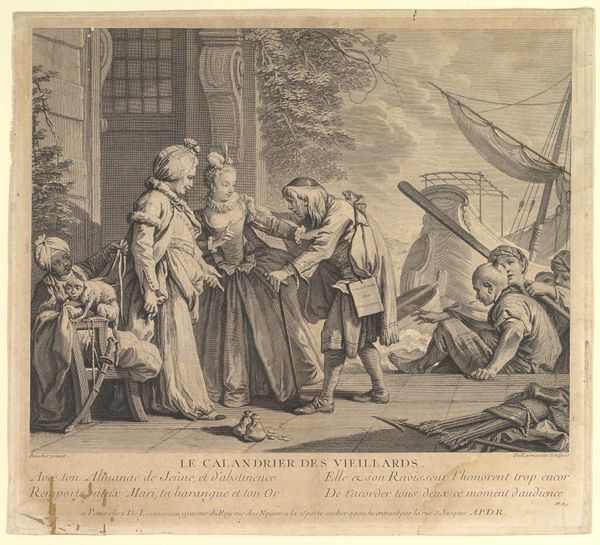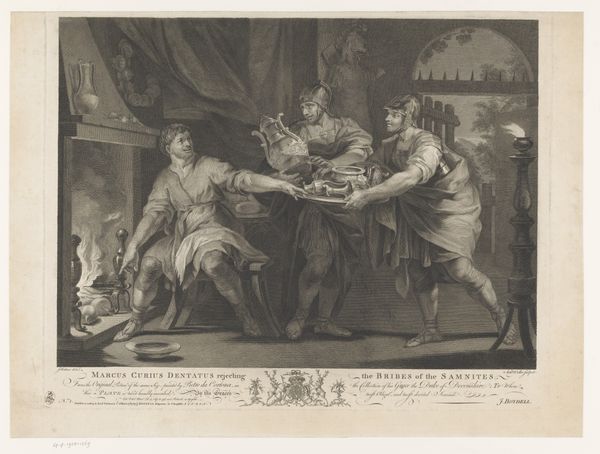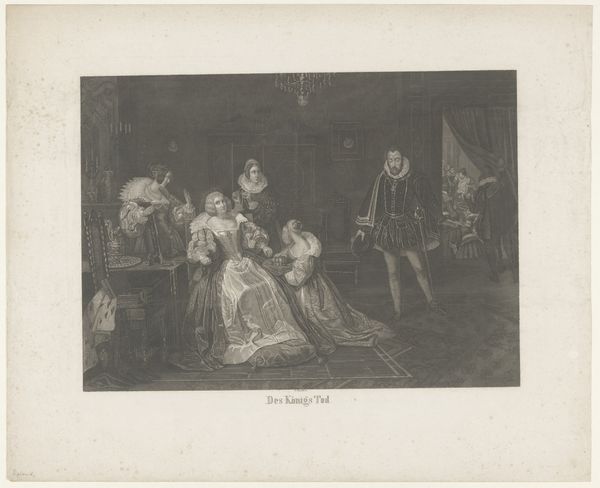
print, engraving
#
narrative-art
#
baroque
# print
#
figuration
#
line
#
genre-painting
#
history-painting
#
academic-art
#
engraving
Dimensions: height 383 mm, width 429 mm
Copyright: Rijks Museum: Open Domain
Curator: Here we have a print titled "Groep acteurs op een podium," or "Group of Actors on a Stage," created between 1726 and 1735 by Jean Michel Liotard. It's an engraving, which captures a scene with several figures arranged across what appears to be a theater stage. Editor: My first impression is the contrast between the rather serious expressions and the quite ornate costumes, particularly that of the central male figure. There is definitely a theatrical tension to the piece and a play of lines and light. Curator: Absolutely. And the historical context informs that tension. Consider the social role of theatre during that time, its power to critique, to challenge societal norms, especially gender norms in the public space, it reflects broader political narratives as the public gathering created through this art could affect political events. Notice how women are portrayed—one overcome with emotion, another rather passively standing. Editor: From a purely formal point of view, I’m drawn to the arrangement of the figures, almost like a frieze. There's a real balance between the dense group on the left and the more spaced-out figures on the right. The checkered floor leads the eye into the architectural elements behind the players which seems to serve as both background and stage-setting, heightening the constructed nature of the drama. Curator: Right, the engraving becomes a record of performance, an interpretation that offers commentary on performativity itself. And it also reflects power dynamics embedded within the theater and society—who gets to perform, who's allowed a voice, what stories are valued. The emotional display reads differently when we contextualize it through the realities of the artists and performers of this period. Editor: Yes, and the artist uses the line and form itself to guide the reading. The composition channels our attention through distinct, clearly articulated groups toward an unfolding event with an impending narrative climax. One can analyze each form individually and how the artist structured meaning, literally building upon each. Curator: Seeing this print through our respective lenses offers rich layers to the meaning it contains, not just for us, but for a wider audience. Editor: Indeed, the conversation extends beyond form to historical dialogue.
Comments
No comments
Be the first to comment and join the conversation on the ultimate creative platform.
